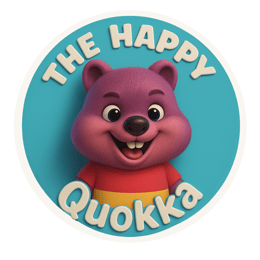Teaching Emotional Validation to Kids
Discover the importance of emotional validation in parenting. Learn how to teach your children that it's okay to feel everything, fostering trust, resilience, and self-awareness. Explore essential parenting tips for supporting your child's emotional journey.
6/24/20252 min read


It's Okay to Feel Everything: Teaching Emotional Validation to Kids
As parents, we often rush to fix our children’s pain: 'Don’t cry.' 'You’re okay.' 'It’s not a big deal.' While these words are meant to soothe, they can accidentally teach kids that their feelings aren’t safe or welcome. Emotional validation is the foundation of trust, resilience, and self-awareness. When we show kids that all feelings are okay, we help them feel seen and secure.
What is emotional validation?
Emotional validation means acknowledging and accepting another person’s feelings — even if we don’t fully understand or agree with them. For kids, it sounds like: 'It’s okay to be sad.' 'That sounds frustrating.' 'I would feel upset too.'
Why kids need validation, not fixing?
- Validation builds trust. Kids who feel understood are more likely to share what’s going on.
- It reduces emotional outbursts. When feelings are acknowledged, they lose their urgency.
- It teaches emotional intelligence. Kids learn that all emotions have a purpose and a message.
Common Phrases that invalidate (but sound kind)
- 'You’re fine!' → Instead try: 'That scared you, huh? I’m here.'
- 'Stop crying.' → Instead try: 'It’s okay to cry. I’ll sit with you.'
- 'There’s nothing to be upset about.' → Instead try: 'Tell me what’s bothering you.'
How to Practice Emotional Validation at Home
1. Mirror Their Feelings
Use simple phrases to reflect what they feel: 'You seem sad.' 'That made you mad.' You’re not correcting — you’re connecting.
2. Stay Present, Not Problem-Solving
Sit quietly. Offer a hug or gentle eye contact. You don’t need to fix the feeling — just witness it.
3. Normalize All Emotions
Make it clear that anger, fear, sadness, and joy all have a place. Show that emotions are safe to feel and share.
4. Model Your Own Validation
Talk about your feelings: 'I’m disappointed, and that’s okay.' When kids see you being kind to your own emotions, they learn to do the same.
Free Printable: Validation Phrases for Parents
Download our free list of 20 emotionally validating phrases to use with your child — great for fridge or calm corner reminders.
Grab it here: Download
Final Thought
Children don’t need us to rescue them from their feelings. They need us to sit beside them while they feel. Teaching emotional validation helps your child grow into an emotionally secure, self-aware human — and that’s a gift for life.
Engaging games and stories for emotional growth.
LEARN
Grow
hello@thehappyquokka.com
+91 89009 78138
The Happy Quokka © 2025. All rights reserved.
LEGAL STUFF
Play
